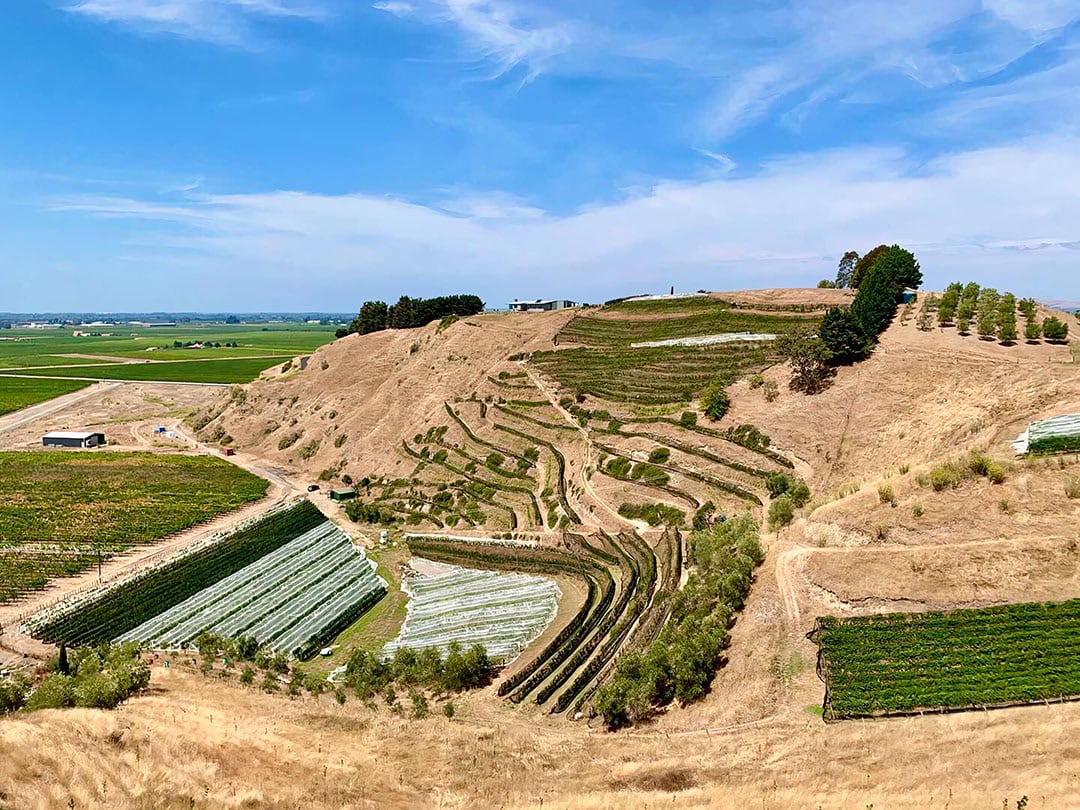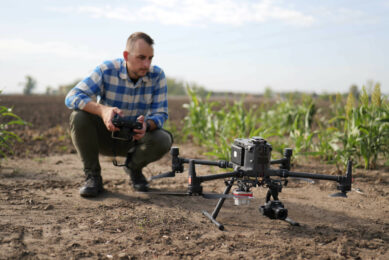Vineyard Management: Drones Combat Powdery Mildew in New Zealand

Drones have emerged as a game-changer for wine growers in New Zealand, offering an efficient and sustainable solution to combat powdery mildew while reducing water usage and labour. Bilancia Vineyard in Hawke’s Bay is leveraging the power of the XAG P100 drone, enabling safe and precise spraying even in challenging terrains.
New Zealand is known for its outstanding wine grape varieties such as Sauvignon Blanc and Pinot Noir. In 2022, New Zealand exported NZ $1.9 billion (US $1.16 billion) of wine, representing 3.6% of its annual export revenue. The wine industry has become one of the country’s top export earners.
But powdery mildew, a type of fungal disease spread by spores, is a key challenge of grape cultivation. It can attack both vines and grapes, decreasing yields and affecting the aroma of wines. Due to the changing weather, the fungal spores are running more rampant under excessive rainfalls. This has put more disease pressure on farmers.
To prevent and control powdery mildew, fungicides should be sprayed regularly. Warren Gibson, Manager of Bilancia Vineyard in Hawke’s Bay, says the vineyard had trouble spraying safely and efficiently, but drones proved to be a solution.
Text continues below picture

Too dangerous on sloped terrain
Hawke’s Bay is the oldest and second-largest wine-producing region in New Zealand. It is home to over 200 vineyards covering 4,600 hectares. As one of its boutique vineyards, Bilancia is located on a steep hillside block, where Gibson and his colleagues used to spray with a 4-wheel motorbike.
“On such sloped terrain, the previous way the job was done, was getting too dangerous for us”, Mr Gibson says. “And we would easily get covered in chemicals, risking our health.” Efficiency was another problem previously. It took about 3 hours to spray the 2-hectares vineyard, using a motorbike.
With grape spraying, you need to cover every single piece of the plants, or else the vine will get diseases
Bilancia aimed to find a new, sustainable approach. Mr Gibson turned to Airborne Solutions, a local partner of XAG in New Zealand, to try spraying with drones. And this worked. The solution for the hilly terrain is to first create a 3D topographic map with a XAG M500 remote sensing drone. Then, a XAG P100 agricultural drone will spray precisely, according to the terrain. With a flight speed of 2.3m per second, the XAG P100 can spray the 2-hectare vineyard within an hour.
According to Scott Horgan, the drone pilot on this mission, the drone can also bring a better coverage on crops. Mr Horgan is impressed by the rotary nozzles and adjustable droplet size of the XAG P100. He selected a droplet size of 70 microns to achieve the best coverage possible and to stop the powdery mildew.
Text continues below picture

Less water used
“The P100 has a 40kg payload, so it is heavy enough to generate a strong downdraft when flown slowly, and can easily penetrate the vines”, Mr Horgan points out. “With grape spraying, you need to cover every single piece of the plants, or else the vine will get diseases.” The drone operation also only consumed one fifth of the amount of water that was used in the past.
Mr Gibson says the use of drones has introduced a safer workplace for the vineyard workers. After the pilot has set the parameters on smartphone, the XAG P100 can operate fully autonomously. The employees of Bilancia can watch it spray from a safe distance. Mr Gibson and his colleagues no longer have to wear full personal protective equipment (PPE) or drive the motorbikes up steep hillsides to spray.
The application of autonomous drones has huge potential to scale up in viticulture. In most places, vineyards still rely on tractor sprayers and overseas workers to manage the grapes. Using drones can help to address labour changes as well.
Join 17,000+ subscribers
Subscribe to our newsletter to stay updated about all the need-to-know content in the agricultural sector, two times a week.



